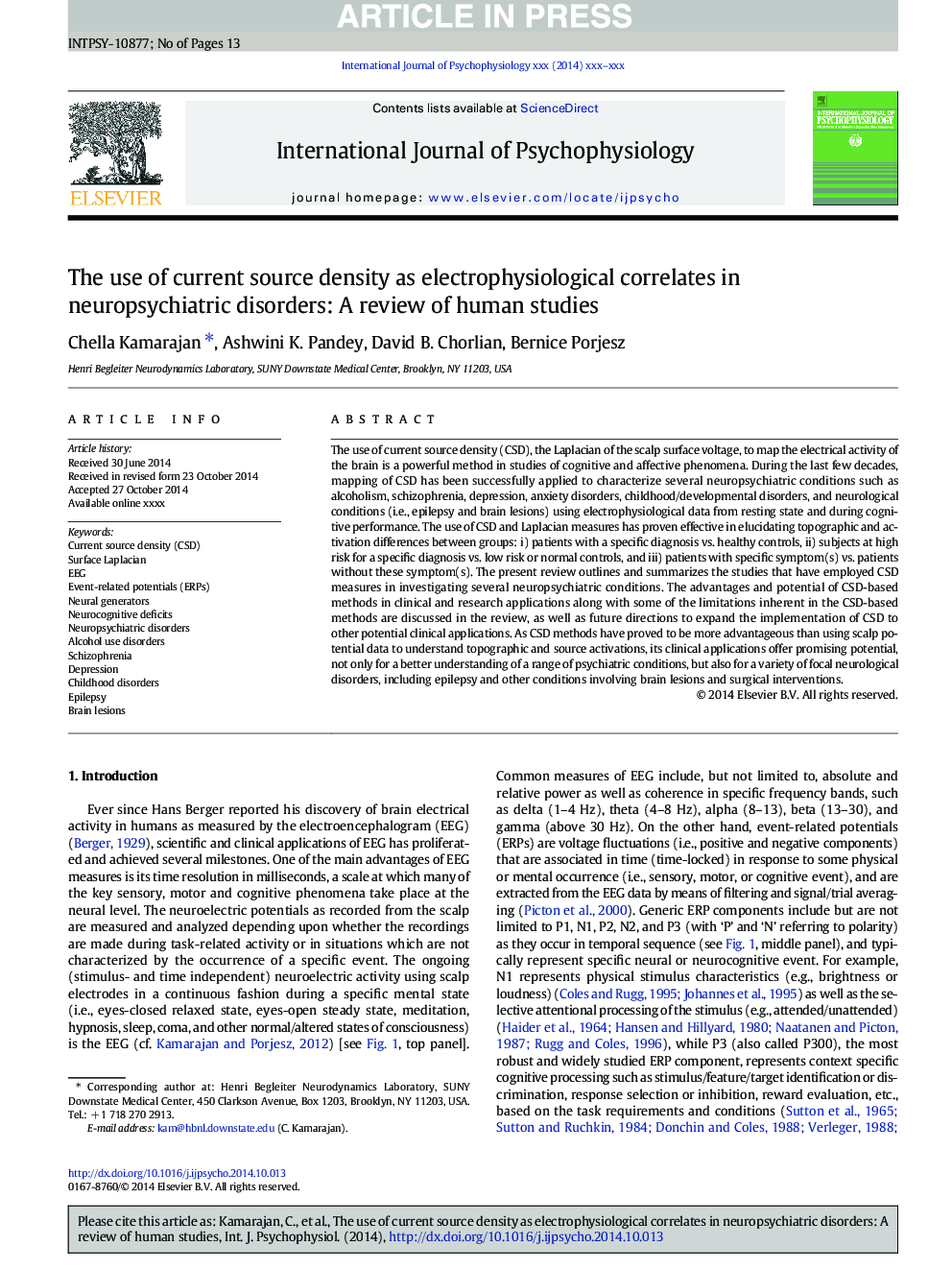| Article ID | Journal | Published Year | Pages | File Type |
|---|---|---|---|---|
| 7295359 | International Journal of Psychophysiology | 2015 | 13 Pages |
Abstract
The use of current source density (CSD), the Laplacian of the scalp surface voltage, to map the electrical activity of the brain is a powerful method in studies of cognitive and affective phenomena. During the last few decades, mapping of CSD has been successfully applied to characterize several neuropsychiatric conditions such as alcoholism, schizophrenia, depression, anxiety disorders, childhood/developmental disorders, and neurological conditions (i.e., epilepsy and brain lesions) using electrophysiological data from resting state and during cognitive performance. The use of CSD and Laplacian measures has proven effective in elucidating topographic and activation differences between groups: i) patients with a specific diagnosis vs. healthy controls, ii) subjects at high risk for a specific diagnosis vs. low risk or normal controls, and iii) patients with specific symptom(s) vs. patients without these symptom(s). The present review outlines and summarizes the studies that have employed CSD measures in investigating several neuropsychiatric conditions. The advantages and potential of CSD-based methods in clinical and research applications along with some of the limitations inherent in the CSD-based methods are discussed in the review, as well as future directions to expand the implementation of CSD to other potential clinical applications. As CSD methods have proved to be more advantageous than using scalp potential data to understand topographic and source activations, its clinical applications offer promising potential, not only for a better understanding of a range of psychiatric conditions, but also for a variety of focal neurological disorders, including epilepsy and other conditions involving brain lesions and surgical interventions.
Keywords
Related Topics
Life Sciences
Neuroscience
Behavioral Neuroscience
Authors
Chella Kamarajan, Ashwini K. Pandey, David B. Chorlian, Bernice Porjesz,
